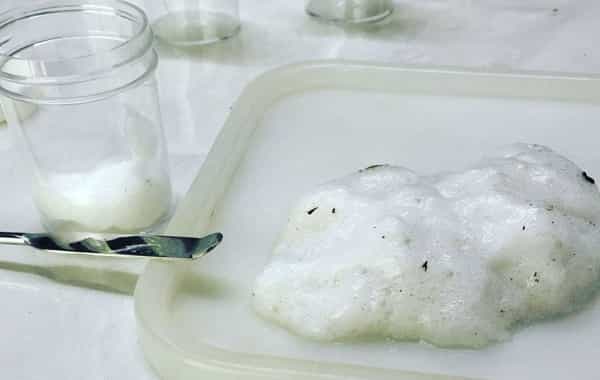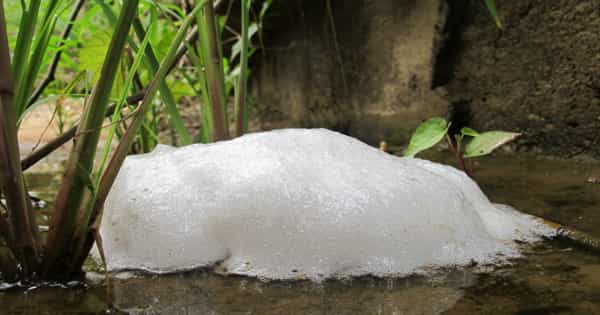A group of researchers from several institutions in the United Kingdom discovered that the foam produced by a specific type of frog can be used as an antiseptic delivery system. The group describes their study of the foam and the various ways they tested its usefulness in a paper published in the journal Royal Society Open Science.
The researchers began their work after discovering female Tngara frogs in Trinidad covering their fertilized eggs with a foam they had created. The foam covering protected the eggs for up to a week, according to observations. The researchers collected samples and transported them to a lab in the United Kingdom for analysis. They discovered that the foam is made up of closely packed bubbles known as vesicles, which protect against dehydration, heat, and, to a lesser extent, bacterial infections. Initial testing of the foam revealed that it was not harmful to humans; additionally, due to its warmth and lower pH levels, the foam degraded very slowly when placed on human skin.
Scientists have shown that the foam made by Trinidadian frogs represents a new, non-toxic antibiotic delivery system that may help to prevent infections.
Further testing of the foam revealed that it was capable of retaining material that was mixed into it—material that would be gradually introduced onto whatever the foam was covering over time. The foam was found to be capable of holding easily-dissolvable test dyes, implying that it could transport useful drugs. They then tried incorporating antibiotics and discovered that the foam could deliver them to a test pad over a period of several days. They discovered that half of the antibiotic rifamycin, for example, was released within the first 24 hours of application, but the rest was released gradually over the next six days.
Drug delivery systems that target specific areas of the body improve treatment and can reduce side effects for patients. The researchers hope to use the foam’s long-lasting, durable properties to treat severe burns, which frequently become infected and necessitate the use of intravenous antibiotics.

Researchers from the University of Strathclyde examined the frog foam and discovered that it is highly stable and capable of absorbing drugs before releasing them at a consistent rate. The researchers discovered that the foam can release model dyes at a steady rate for 72-168 hours, and that foam loaded with the antibiotic vancomycin can prevent in vitro growth of the pathogenic bacterium Staphylococcus aureus for 48 hours. For 24 hours, the foam proteins were tested in vitro against keratinocytes, a type of skin cell. After 24 hours of exposure, the cells were still alive and viable, proving that the foam is not toxic to human cells.
Foams have frequently been used as systems for the delivery of cosmetic and therapeutic molecules; however, the foamability and long-term stability of synthetic foams vary greatly. It is of great interest to develop pharmaceutical foams with desirable foaming properties, appropriate amounts of active pharmaceutical ingredients (API), and excellent biocompatibility.
Stable foam production is uncommon in nature; however, certain species of frogs have adopted foam production as a means of protecting their eggs and larvae from predators and parasites, preventing desiccation, controlling gaseous exchange, temperature extremes, and reducing UV damage. Because of the sensitive nature of amphibian skin, these foams have excellent stability (up to 10 days in tropical environments) and are highly biocompatible.
According to the researchers, current medicinal synthetic foams typically last from a few hours to a few days before dressings must be changed—a painful process that puts patients at risk of infection. They admit that more testing of the foam is needed to ensure that it is safe for human use. A method for producing the foam is also required before it can be considered as a potential new approach for treating injuries, including burns.















